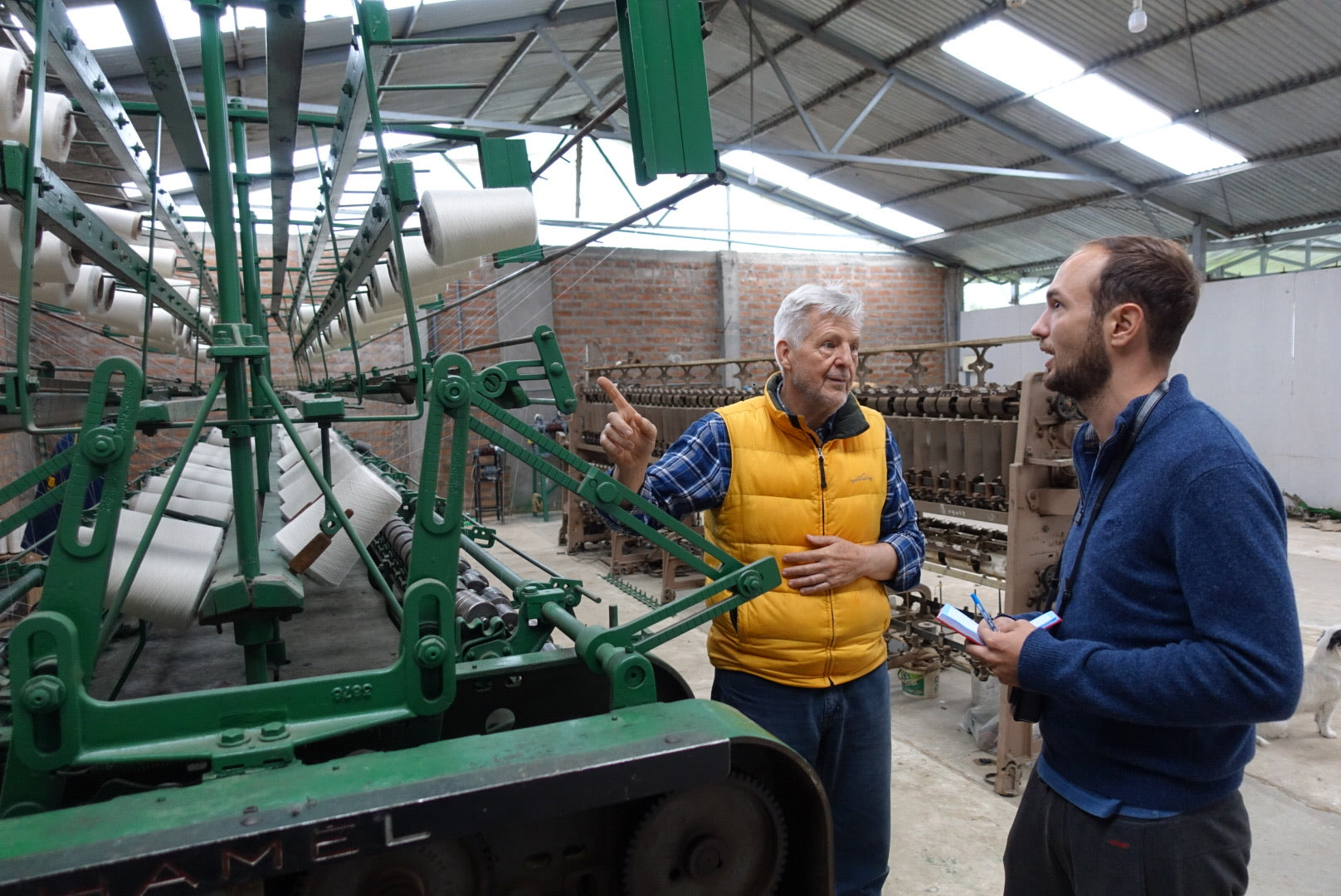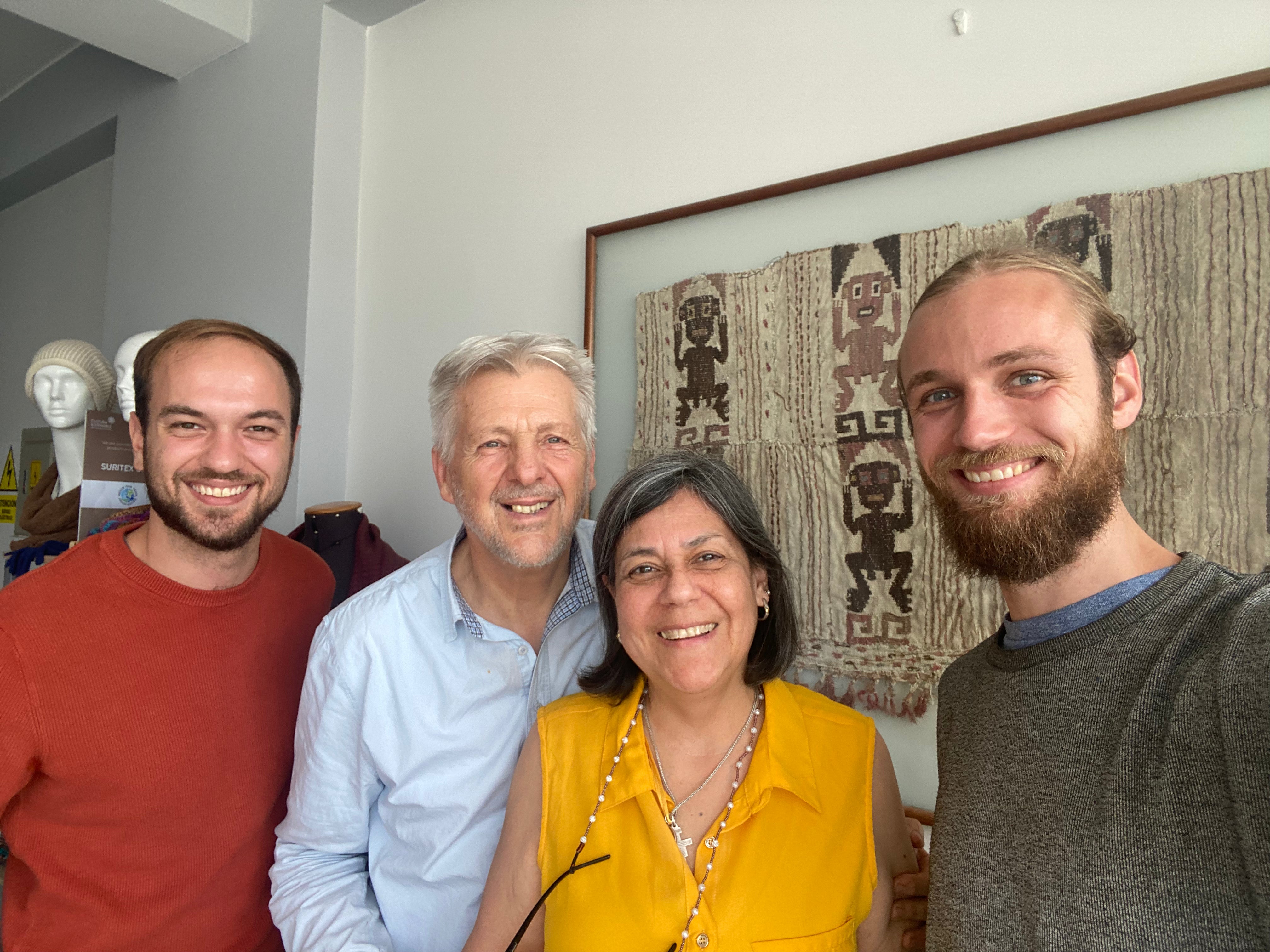Meet the people behind your garments

Gregor Brenner's Suritex
Suritex is a small Peruvian business based in Concepción, Junín. Gregor Brenner, whose grandparents migrated to Peru as Farmers many decades ago, is a bit of a genius when it comes to wool technology.
He applies his vast knowledge to his workshop, where he and his team are working to become a small business able to compete with big industrial players in terms of quality and price.
Suritex is a crucial partner for two reasons. First, they are on track to become what may be the first small business capable of producing industrial-quality yarn in Peru. Second, they are working to unite alpaqueros (alpaca shepherds) in the region through a cooperative, strengthening the bargaining power of the most exploited group in the alpaca textile value chain.
Let’s take a look at what this means.
Industrial Quality Yarn
Currently, Gregor buys his yarn from big producers, weaving it into scarves, ponchos and other products in his workshop. Industrial yarn production can improve quality through various steps, but especially in the spinning process, where machines can produce the finest threads. For hand-spun yarn, “the finest we can manage is 200 metres per 100 grams”, says Karina Ponce, a former operations manager at MILLMA & QAYTU. Gregor on the other hand uses yarns with up to 6’000 m per 100 g, and 2’400 m to 2’800 m for our scarves. In addition, handspun wool is more uneven, which makes it hard to use with e.g. knitting machines.
The intuitive solution to this is building your own yarn workshop. But this is a massive investment, with costs for all production steps easily soaring into the hundreds of thousands. This presents a major challenge for any small business hoping to produce their own industrial quality yarn.
A herculean task - and one that Gregor is on the verge of completing. After years of planning, procuring old machines and making them fit for purpose, he is getting close to internalising the yarn production process at Suritex. This would allow them to circumvent the big players and buy wool directly from the alpaqueros, giving them a better alternative to the dominant players on the market.
This is one of the most important steps needed to improve the alpaqueros’ income.
Alpaquero Cooperatives
Next to his efforts internalise yarn production, Gregor is supporting alpaca shepherds in the region to form a cooperative. This is a legal body that will allow them to bargain for a better price together. Through this framework, it will also become easier for them to jointly purchase equipment.
For instance, according to Gregor, many alpaqueros have purchased a shearing machines, overpriced by a local reseller who exploited their lack of knowledge of the market price of such a device. Through a cooperative, they will be able to jointly purchase a much smaller number of machines at a better price, and share these machines within the cooperative. This is because the cooperative is a shared legal association, creating trust among its members who would otherwise be sceptical about such collaborations.
Furthermore, Gregor hopes to improve the genetic quality of the herds. Alpaca breeding is a very tricky process, because it cannot be done artificially. This is good for the animals, as it means that breeders work to create a setting where they feel comfortable, encouraging rather than forcing procreation.
Gregor’s plan is to have a herd with high-quality genes, i.e. producing high-quality wool. Through this herd, he then wants to improve the genetics of herds of the cooperative’s members. Better wool, in turn, would then further increase the alpaquero’s income
In sum, Gregor is working every angle to improve the local alpaca textile value chain. This will not only benefit Suritex, but also the alpaqueros with whom he is seeking to collaborate. While this is not the romantic, hand-made approach others are taking, it yields more competitive products. These are accessible also to less wealthy customers, and can thus achieve an impact on a large scale.
Foto: our visit to Gregor and Raquel, who jointly run Suritex
